This post may contain affiliate links. Please read our disclosure policy. As an Amazon Associate, I earn from qualifying purchases.
I love a good rye bread and this loaf of dark sprouted rye bread is exceptionally delicious! This is a fine textured, soft, dark, sprouted rye bread and we added caraway seed to give it even more character. This homemade rye bread is so much better than anything from the supermarket.
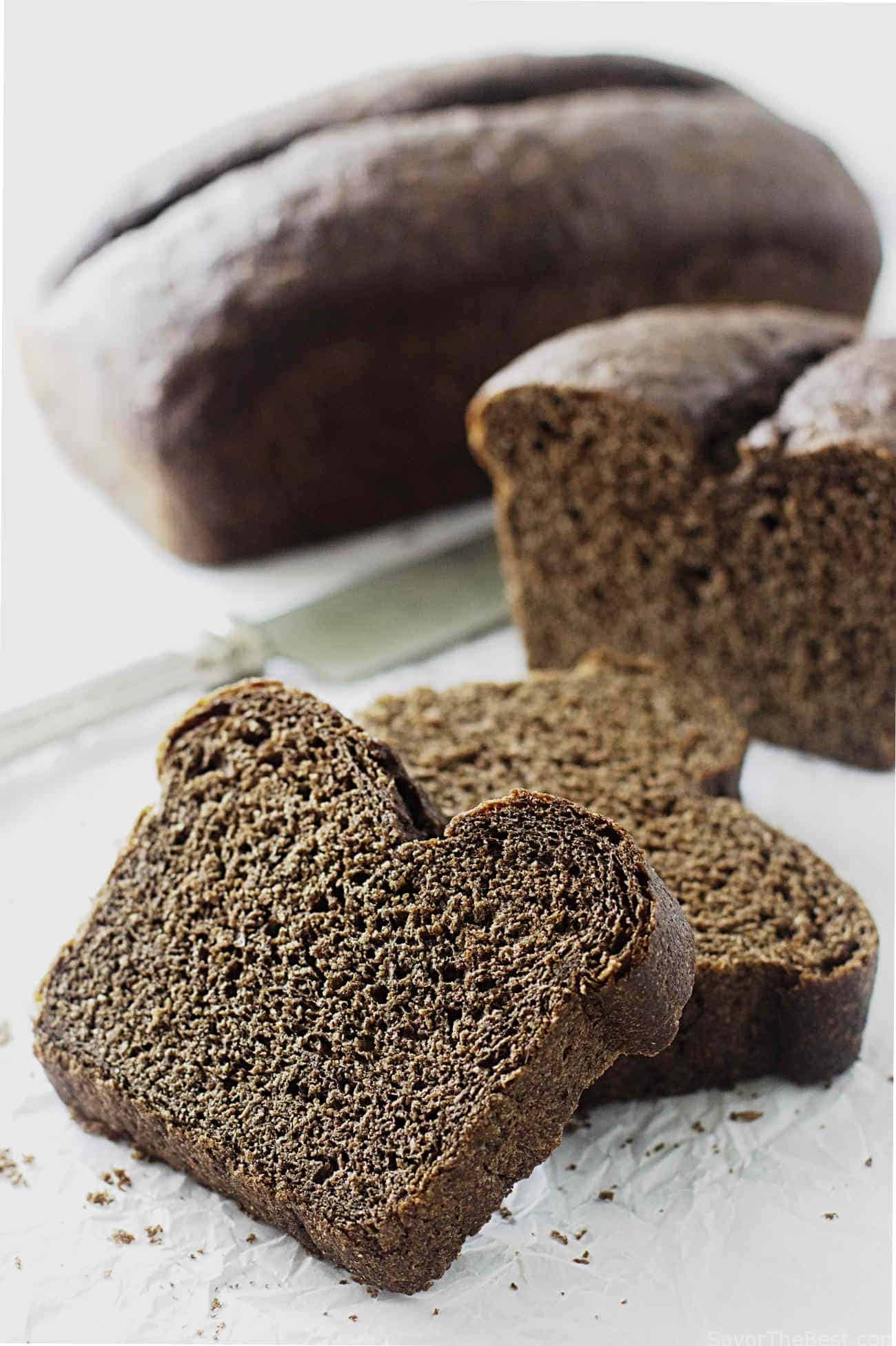
This rye bread has so much flavor you might want to eat it plain but we won’t stop you if you want to dip it in some garlic butter sauce or herbed olive oil.
I wonder how many of us remember our grandmothers in the kitchen with her apron on, her hands in a mixing bowl kneading a lump of bread dough with flour up to her elbows. That was a weekly event in many households and depending on the size of the family, maybe a couple times a week.
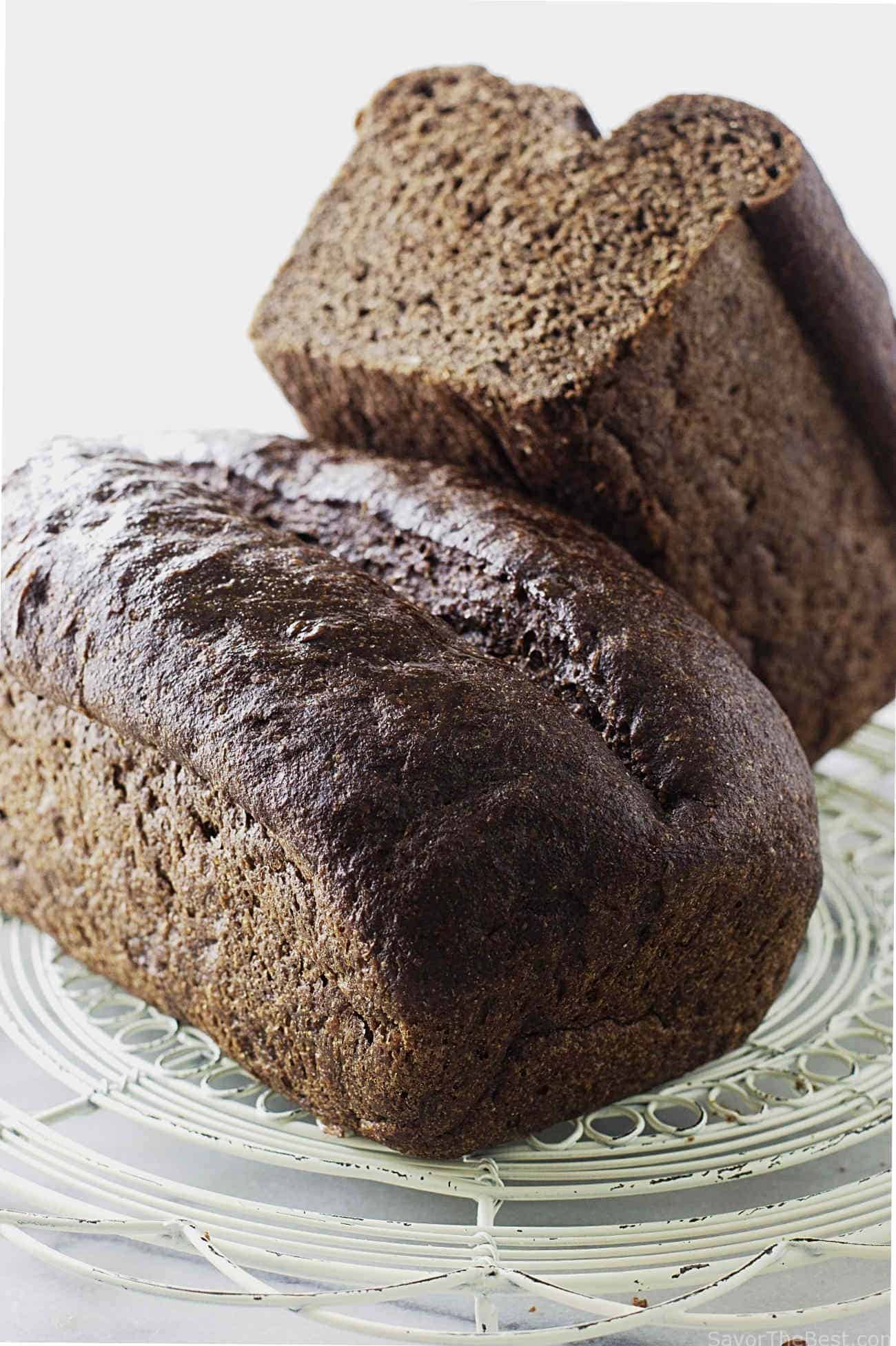
In our typical modern-day kitchens store bought bread, with all the preservatives, has replaced the art of bread making and it is no longer a weekly occurrence. However, bread making is an art and to get your hands in that flour, mashing that lump of dough and seeing a freshly baked loaf on a cooling rack is so satisfying. And then there is the taste. Oh, it can be so addictive!
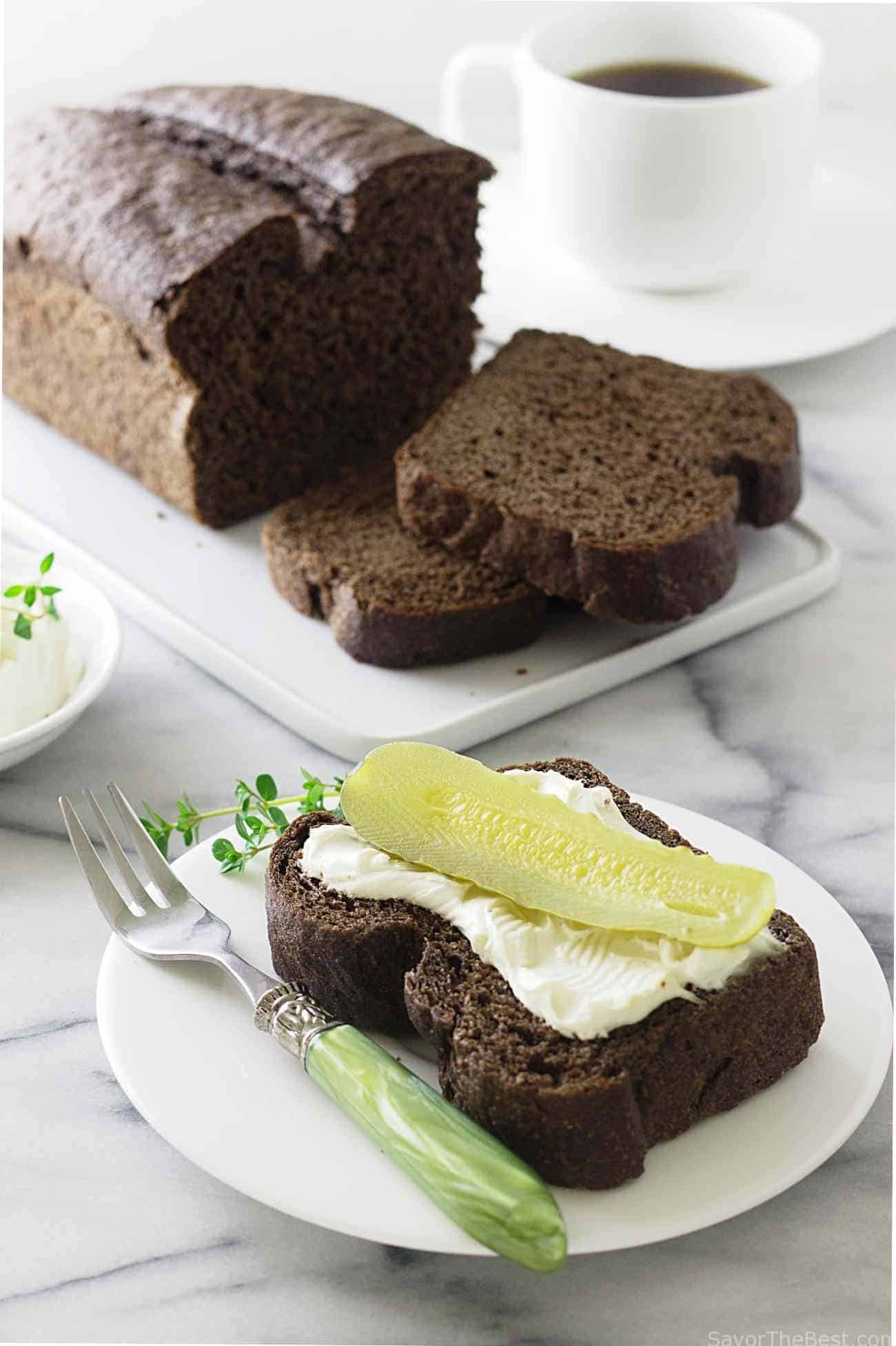
Why This Recipe Works
Our rye bread is made with organic sprouted whole wheat flour and organic sprouted rye flour. The flour is made by sprouting the grains, drying them and then milling them into flour. This is a different process than a sprouted grain bread which is made with the sprouted grains being made into a mash and turned into a dough after they are sprouted.
By using flour that has been milled after sprouting and drying the grains, you will end up with a lighter and softer crumb than if you make a pulp directly from the sprouted grains. Whole grains and lower gluten grains will always make a more dense loaf of bread but it is quite impressive how soft the crumb is with a sprouted grain flour. This is not your typical whole grain bread that turns out as hard as a rock. This bread has a dense, yet soft crumb to it.
Most commercial bakeries that bake sprouted wheat bread will add vital wheat gluten to their bread in order to create a higher rise and lighter loaf. This recipe does not call for vital wheat gluten but you will still get a pretty light loaf. There is just something magical about sprouted grain flour. It will give you a lovely, soft full flavored bread. It doesn’t require long fermentation time because the enzyme activity has already been accomplished during the sprouting phase of the grain.
Once the grain has sprouted it changes from a starch to a vegetable. It develops more flavor and a natural sweetness but it also becomes much easier to digest and the nutrients become more accessible to the body.
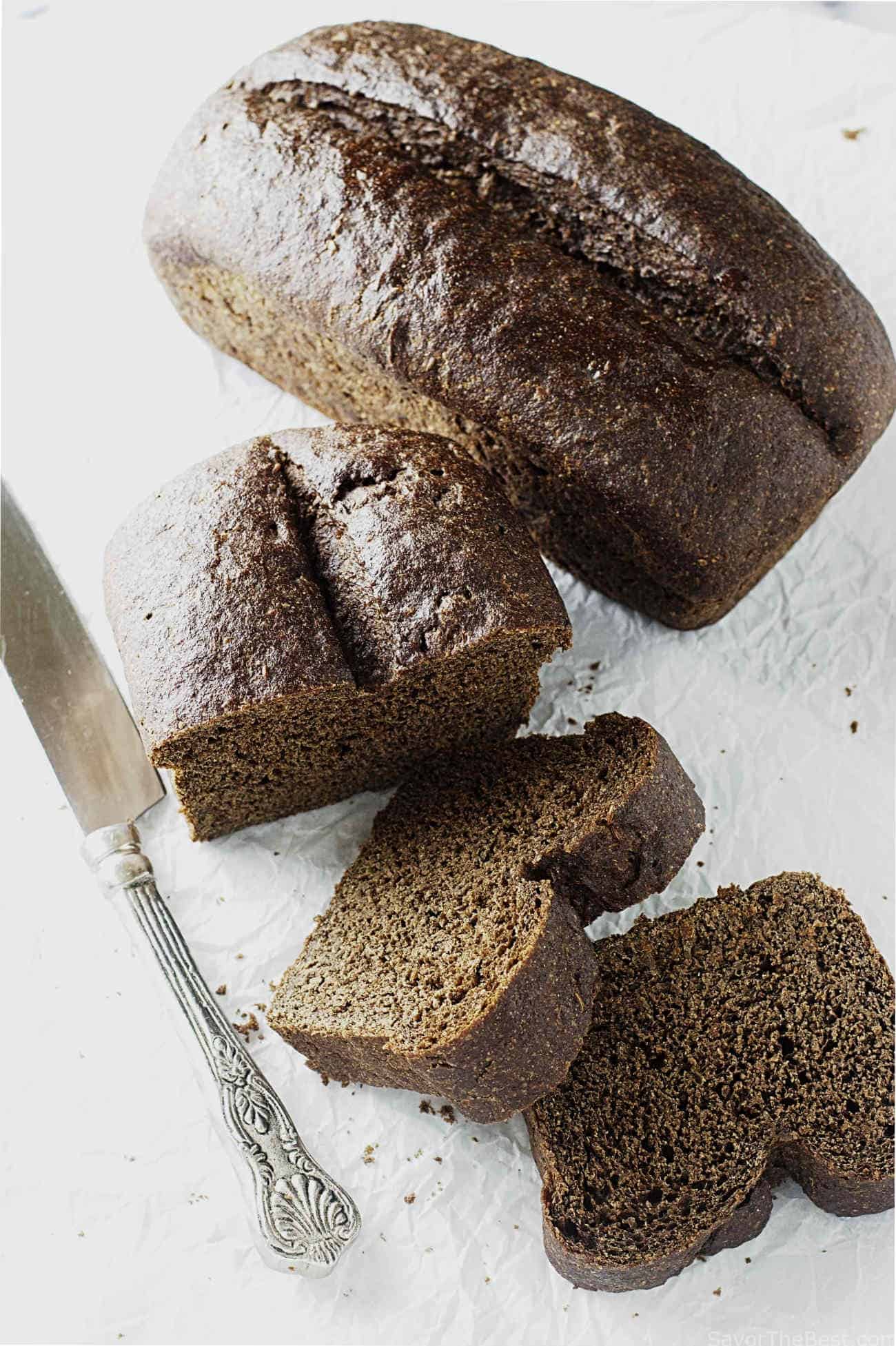
More Artisan Bread Recipes
- Einkorn English Muffins
- Oatmeal Bread
- Naan Bread (Baked 3 Ways)
- Cracked Wheat Bread
- 21 Artisan Bread Recipes
The finished loaf has a distinctive rye taste with sprinklings of caraway seeds throughout. It is soft, with a fine texture and adding just two tablespoons of cocoa powder gives it a rich dark coloring but does not affect the flavor of the bread.
A typical modern-day supermarket with a bakery section will most likely have artisan breads available but there is nothing like producing your own bread from scratch.
This recipe was adapted from Peter Reinhart’s Bread Revolution. We modified the recipe to be made without a mother starter. It is a pretty high hydration dough which makes the dough sticky and difficult to work with if you knead it in a traditional method.
However, if you use the stretch and fold method of working the dough, it is not only easy to work with the dough but it gives the flour ample time to absorb the liquid and firm up. Don’t worry if you start out with a wet sticky dough. You will see it start to firm up after the first resting phase.
For more bread recipes: Oatmeal Bread, Spelt Irish Soda Bread, Sprouted Spelt Rosemary-Walnut Bread
Pin this now to find it later!
Pin It
Sprouted Rye Bread
If you make this recipe, please leave a star rating and comment.
Ingredients
- 4 ¾ cups sprouted whole wheat flour, 570 grams
- 1 ½ cups sprouted rye flour, 156 grams
- 2 tablespoons Dutch processed cocoa powder, optional, use if you want dark rye
- 2 teaspoons salt
- 2 ¼ teaspoons instant dry yeast
- 1 tablespoon toasted caraway seeds
- 2 ⅔ cups warm water
- 2 tablespoons unsulphured molasses
Instructions
- Combine the sprouted flours, cocoa powder, salt, yeast and toasted caraway seeds in a large mixing bowl. Add the water and molasses and stir until all the flour is wet and sticky. Let the dough rest for 5 to 10 minutes to allow time for the flour to become hydrated.
- Using a wet spoon to help prevent the dough from sticking, stir the mixture for 2 minutes until it is smooth. The dough should still be soft and sticky but will continue to firm up over the next few steps.
- Place the dough in a well oiled bowl. Using wet hands, stretch and fold the dough 4 to 6 times as described in the notes below. After the last stretch and fold, oil the top of the dough and let it sit, covered at room temperature for 1 to 2 hours until it is almost doubled in size.
- Transfer the dough to an oiled work surface and divide it into two equal portions. Shape each portion of dough into logs and place each one in a greased 4 1/2 by 8-inch loaf pan. Oil the tops of the dough, cover with plastic wrap and let them sit at room temperature for 1 to 2 hours until the dough rises about 1 inch above the top of the pans.
- When the dough is almost finish rising, preheat the oven to 350° F. Place the loaves in the oven once it is up to temperature and bake for 30 to 35 minutes. The finished bread should sound hollow when thumped on. Remove the loaves from their pans and place on a wire rack until completely cooled.
Notes
- Stretch and Fold Technique Using a stretch and fold method helps strengthen the dough without over mixing. It is a good technique for higher hydration doughs and allows ample time for the flour to fully hydrate. You can do the entire process in the same oiled bowl each time, saving space and mess on the counter top. Start with wet or oiled hands to help prevent the stickier dough from sticking to your hands. Mentally divide the dough into 4 sections. Reach under the first section and pull it up and over the top like your folding an envelope. Do this to all four sides then flip the ball of dough over so that all the seams are on the bottom. Cover and let the dough rest for 5 to 10 minutes then repeat the process 3 to 4 more times.on the last stretch and fold, let the dough rest for its final proofing.
Nutrition
Nutrition information is automatically calculated, so should only be used as an approximation.
 Like this recipe? Rate & comment below!
Like this recipe? Rate & comment below!
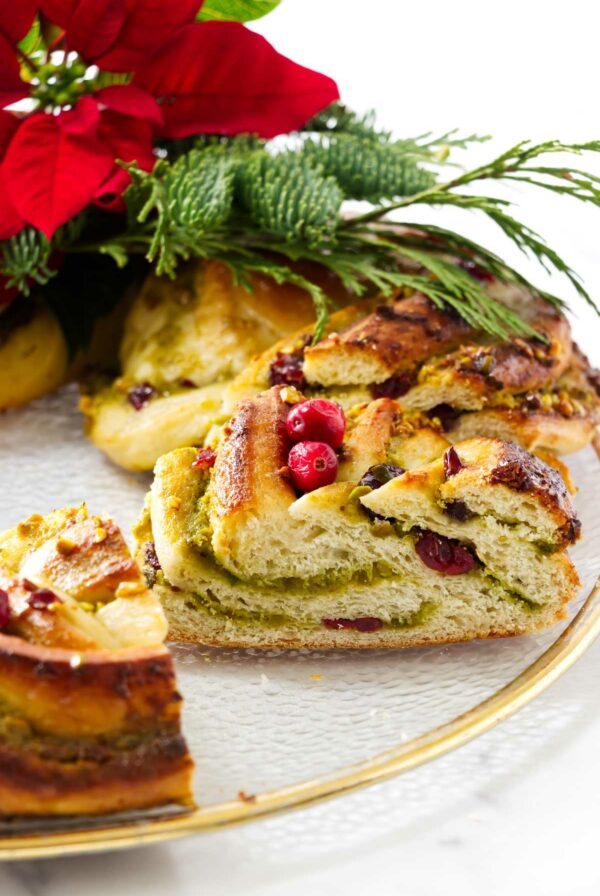

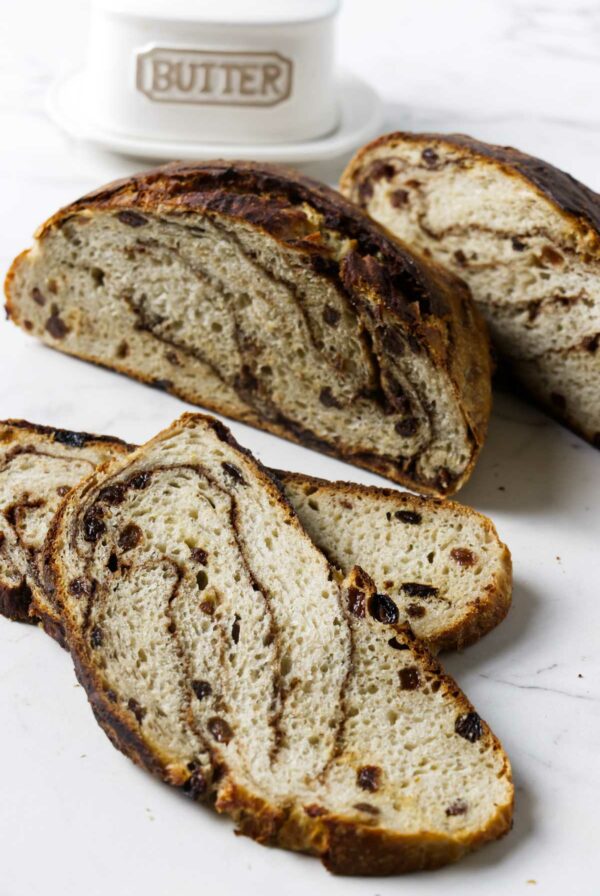
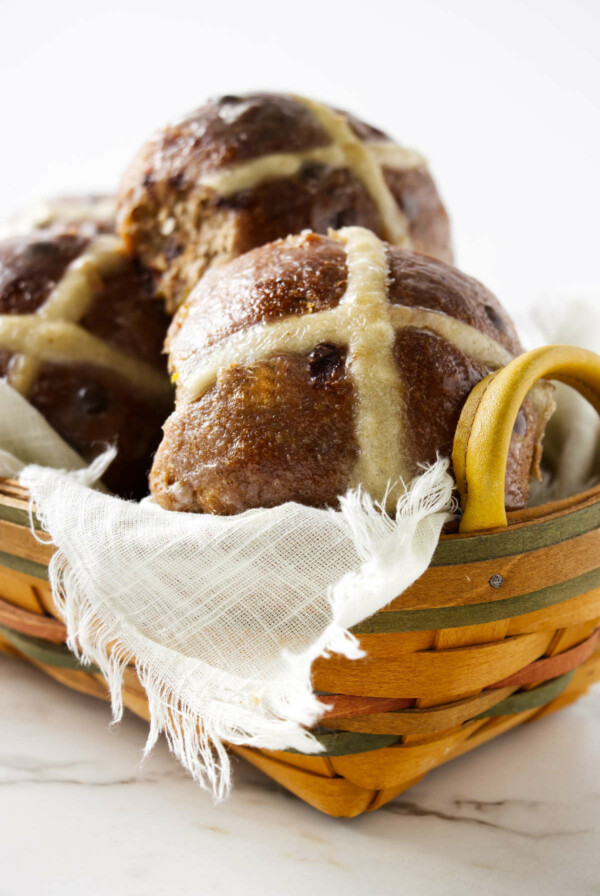










What size loaves does this make? I want to try making this rye bread in my bread maker that makes 1 one-pound loaf.
It makes 2 one-pound loaves.
@Dahn Boquist, I noticed in a 2020 reply that you had not tried the recipe in a bread machine. Do you have experience now? I have arthritis in both hands and a break maker is far less painful. Does a bread maker do an equitable job to stretch and fold? I use a Dutch oven to bake bread.
TIA
Michael
I haven’t tried the bread machine with this recipe. I have heard that others have used it with success. However, I feel like this is such a high hydration dough that the kneading mechanism in a bread machine would not work as efficiently as a stand mixer or the stretch and fold method. This bread will also do quite well with just a couple of stretch and folds which is a great technique to use if you have arthritic hands.
You might want to try “malted red rye” instead of chocolate to make your dough dark, great flavor and dark rich color
Thanks for the tip, that sounds good.
Hi. I don’t have sprouted whole wheat or sprouted rye. Can I use dark rye and white whole wheat instead?
This recipe was specifically formulated for sprouted flour. If you don’t use sprouted flour then the ratios will not be right.
Can I use wheat flour instead of sprouted wheat flour? I have sprouted rye but I don’t have sprouted wheat. I’m also using a bread machine.
Yes you can. You may need to add slightly less liquid to the recipe but it will work just fine.
can I use sprouted rye flour in my bread machine?
I haven’t tried it myself but I have had feedback from readers that it works.
Most amazing recipe of rye bread so far. Used 100 g of starter instead of the yeast., added 1 tbsp of instant decaf coffee Baked it with steam and result is European artisan rye bread. Thank you!
I’m so glad to hear it turns out well with starter. Thanks for the comment.
Can I use a dutch oven to cook this in? I love the artisan breads and use my dutch oven for everything. I also have a rectangular cloche.
Yes, this works great in a Duch oven or a cloche. That will make a really nice crust on the bread.
I used the exact measurements prescribed above and my dough ball is sticky but not pliable enough to mix with spoon. So I kneaded for two min instead. Then in five min intervals, I tried what I thought was a stretch and fold, but again it seemed more like a kneading because it was already pretty thick mass and not stretchable. I read Peter Reinhard’s books but never seem to get the pliability or the rise that others achieve. Any suggestions? More water?
How did your final bread turn out? There are so many variables in bread making that it is hard to know exactly why the bread is different in your kitchen. You also may need to just give the dough a little more rest time. The dough will not be pliable right away. Initially, it will be a sticky, messy mass. Just let it rest so the flour has time to hydrate. Try to avoid kneading it to try to get the right consistency. This dough does better when it has time to rest and hydrate. Temperature, humidity and altitude can also be effecting the consistency of the dough as well so don’t be daunted if you seem to need to use more or less water than the recipe calls for. I have to make slight adjustments simply based on the time of year I bake bread. After you bake a few loaves you get a good feel for how it should look and it gets easier.
@Juli, I had the same issue. what cued me in on the solution was his description of the dough. He said it would be like ciabatta dough. for some reason his recipe added too much water that consistency. When mixing after the first rest it should be thick enough to start riding up the dough hook. mine first attempt following the recipe was like you described, more like a thick batter than a dough. just don’t go overboard with the flour, this is supposed to be a sticky dough.
Can I use my KitchenAid mixer to do the mixing? I have arthritis which limits my kitchen skills these days and am looking for arthritis friendly baking now, but am leery as to what I can use technology for when I always have done everything by hand. I am sure I can still stretch and fold, just the stirring part might be too much. Another silly question (I am a terrible dough baker, nothing ever turns out looking nice) would I use coconut or olive oil to grease the bowl? Thank you!
Hey Sue, absolutely! If I were you I would use the KitchenAid for all of my bread mixing. Don’t stress those hands! And you can use coconut or olive oil to grease the bowl. Both of those oils work very well and I use them all the time. Another very healthy oil is avocado oil which is flavorless.
We love baking our own bread! Rarely buy it from the store because homemade is just so good. But one exception is rye bread — we don’t often use it, so we’ve been buying that. We should make this — it looks much, much better than store bought. Good stuff — thanks.
Thanks John, if you try it let me know how you like it. It freezes well so don’t hesitate. Enjoy